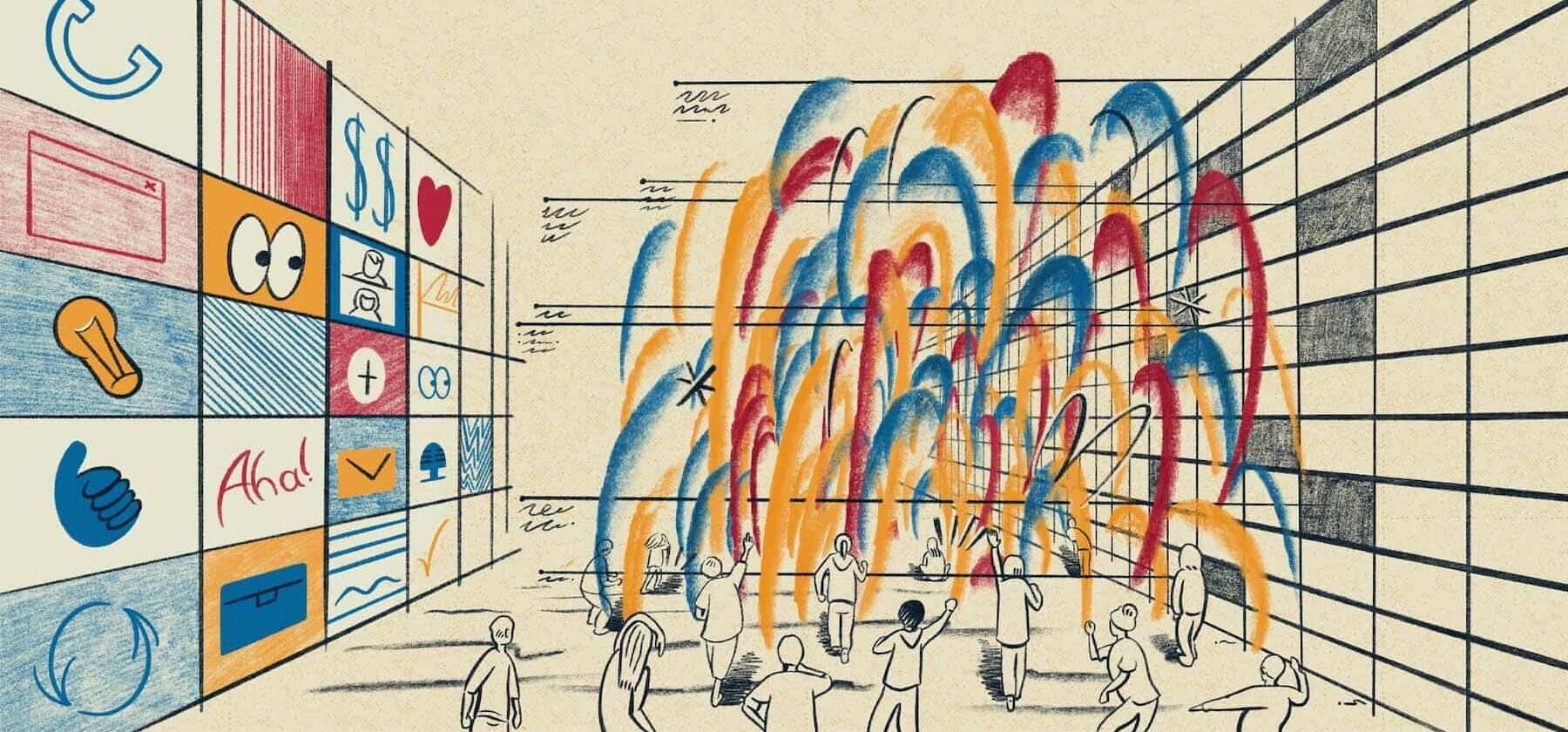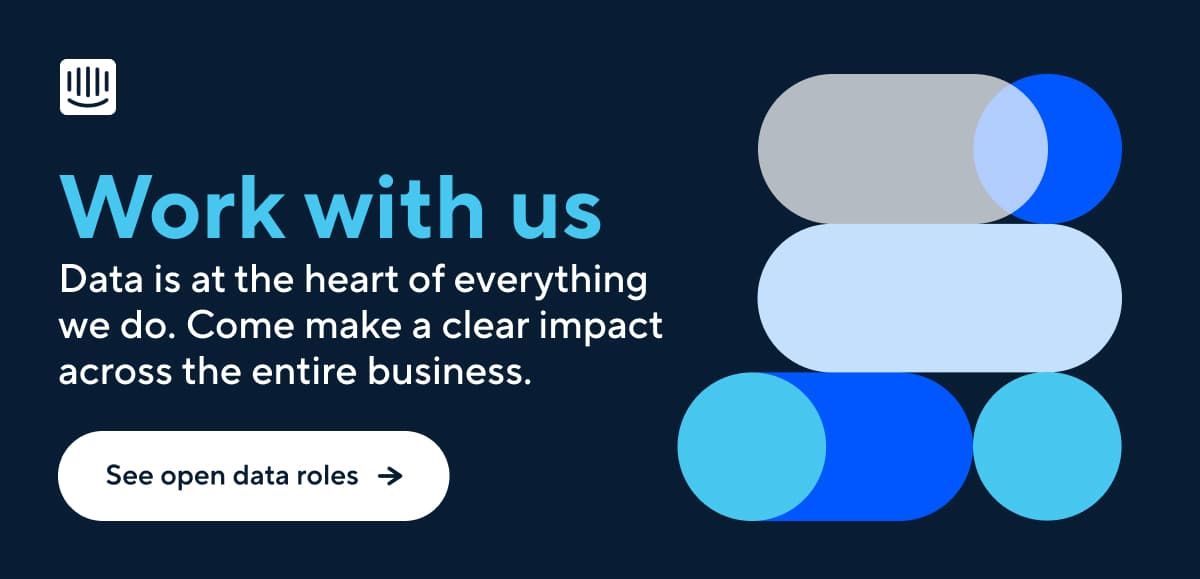
Transform the way you share your work: Tricks from Hollywood’s publicity playbook
Main illustration: Amy Lauren
At Intercom, we believe in the power of sharing cross-functionally. Seeking feedback at various stages of a project helps avoid bottlenecks and silos, and ultimately drives business impact.
Diving into a new project is an exciting challenge, but it takes time to develop context, address stakeholder needs, and meaningfully understand the problem. Without even realizing it, we begin to work with blinders on. We can overlook important perspectives outside of the project, reinvent the wheel, and duplicate work. When we miss opportunities to reach out to others and share our work, it ultimately reduces true business impact and can often result in projects that miss their mark.
How can we shift our thinking, take our blinkers off and ensure we’re sharing our work in a more inclusive way? These questions can be answered by a familiar model – that which the film industry has used to support movie releases for decades. We can all relate to anticipation of an upcoming film – from the announcement that your favorite book is becoming a screenplay, to the cast of the latest James Bond. Advertisements are inescapable – they’re on the side of our bus to work, they’re in the magazine we’re reading, and they’re infiltrating our social media feeds, podcasts, and television shows.
“As the divide between the physical and digital worlds blurs, audiences want to feel like they’re part of the project”
There is never a moment where we are not in the know, or only a click away from everything we need to know about an upcoming film. As the divide between the physical and digital worlds blurs, audiences want to feel like they’re part of the project. By providing interested parties with relevant information, film crews can nurture a sense of community and excitement.
Applying this familiar model, we can transform how a project is executed and shared, reduce unforeseen work, eliminate duplication, and most importantly, increase the success of our output. Here, we’ll dive into the ways we can apply the film industry’s tried and tested model to future projects.
Translating film industry phases to tech
1. Idea: Concept, problem, information gathering
Start with the concept, decide the problem to be solved, and gather all relevant historical context. That means acknowledging the needs of your audience or customers, and the ways this work will impact them – both positively and negatively. Document this step with in-depth notes, seeking feedback from contributors.
2. Screenplay: The story you will tell
Transform the idea into a project outline with your audience (anyone who’ll be involved with the project) in mind. Make sure to include essential context, the problem statement and desired outcome. Link all relevant documents and resources to provide a holistic overview of the topic.
“Ask yourself ‘Who can help me with this project?’ and ‘Could other departments benefit from exposure to this work?’”
3. Cast: Find your cast of characters
Ask yourself “Who can help me with this project?” and “Could other departments benefit from exposure to this work?”. Select those who are most relevant and ask them who else should be included in the work. Define your DACI, mapping out the project specific Driver(s), Approver(s), Contributor(s), and those who will be Informed as the project progresses.
4. Filming: Lights, camera, action
You’ve addressed your concept and problem, and planned the steps you need to take to create your output. Depending on your area of expertise, the format of the output will vary (e.g., it might be a written document, presentation, data analysis, design, video, etc.).
5. Editing: Stitching it all together
Give yourself space and time to reflect and review. Address any new questions raised in the output and share the strawman proposal with the key stakeholder group.
6. Ads/trailer: Build the anticipation
This is your opportunity to create hype and momentum around the project. Depending on the output, the trailer can appear in different formats – from a one-page project overview to highlight reels, a dashboard, or designs. It’s also an opportunity to share information about the delivery date and encourage attendance.
7. Screening: Share early and often
This is your chance to present to a smaller audience i.e., the DACI – an editing stage to review the work. It allows you to gather initial feedback and update the output ahead of the wider launch date.
8. Movie premier: Roll out the red carpet
This is the project deadline – the day you share your work with a wider audience, including your DACI and all interested parties. It is a great opportunity to present the content, your plan for it, and its potential impact on your team and the wider company. Record the session and promote re-watching and further sharing of the content.
9. Film reviews: Everyone’s a critic (and that’s a good thing)
Welcome feedback and gather perspectives from the audience, whether through a form, a listening tour, or direct messages. Feedback is a gift, and this stage is crucial to understanding the project impact and how the output will influence decisions. It also determines whether there will be a potential sequel, or the need for more work off the back of this output.
“Maximize the staying power of the project over time to ensure the project has longevity and momentum is maintained months after”
10. Build your franchise: Keep the magic alive
Maximize the staying power of the project over time to ensure the project has longevity and momentum is maintained months after. Take every opportunity to reshare your content whenever relevant. Depending on the project type this may even be an opportunity to create a franchise by carrying out additional analysis and maintaining data over time to continue creating value – much like the film industry does with merchandising.
Don’t let your work go straight to DVD!
The goal of this process is not to change your project stages completely, but instead to make them more effective and impactful. It’s time to be noticed and let people celebrate your work!
Start small and begin to apply aspects of this model to your next project, thinking outside of your function (e.g., sharing with product, marketing, sales, and finance teams) and reaching wider to connect with other stakeholders who are keen to collaborate. Whether you are starting off in your career or a leader – everyone can take something from this process.
Feeling totally RAD after reading this? If you want to help shape the future of the RAD team (Research, Analytics & Data Science) at a fast-growing company on a mission to make internet business personal, take a look at our open roles.








